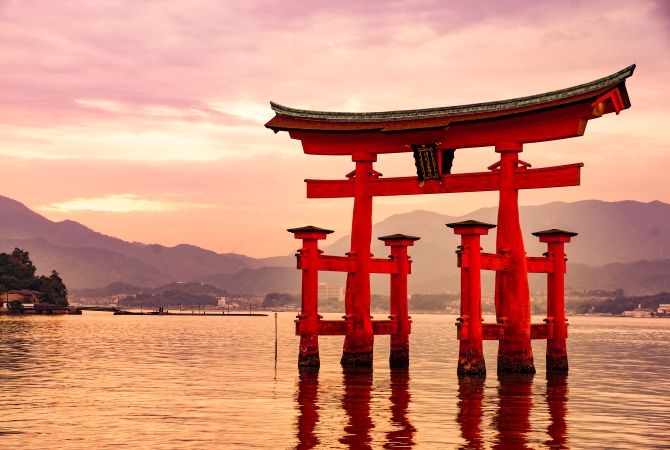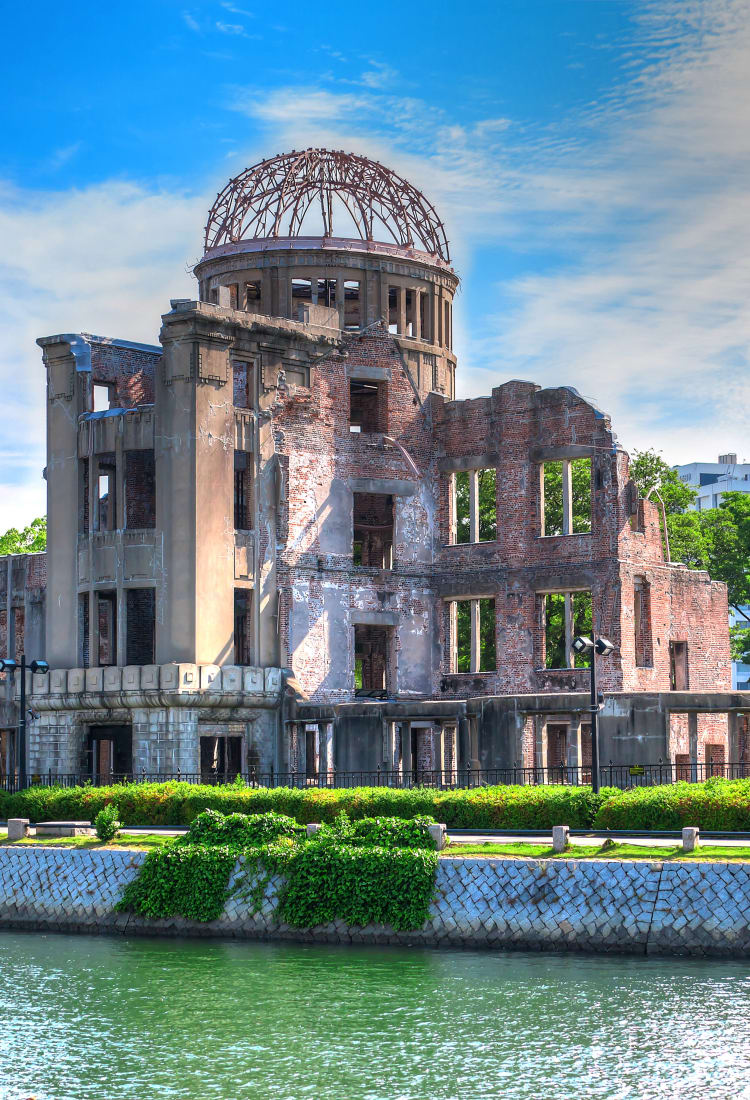
MODEL ROUTE Hiroshima
Route (Day 1)
Hiroshima Station → (30 minutes by bus and on foot) → Shukkeien Garden → (30 minutes by bus and on foot) → Okonomiyaki lunch → (on foot) → Hiroshima Peace Memorial (Genbaku Dome) and Peace Memorial Park → (on foot) → Hiroshima Peace Memorial Museum → (on foot) → Orizuru Tower
Shukkeien Garden
Shukkeien is a Japanese garden designed 400 years ago to resemble the famous scenery of the West Lake in China. Starting with cherry blossoms in the spring, the garden is adorned by around 30 different kinds of seasonal flowers, and visitors can enjoy the view with a delicious cup of tea at the tea house. The garden was destroyed by the atomic bomb dropped on Hiroshima in 1945, but has been restored to its original beauty through the people's efforts.

Address: 2-11 Kaminobori-cho, Naka-ku, Hiroshima-shi, Hiroshima URL: http://shukkeien.jp/pdf/EnglishBrochure.pdf (English/PDF document)
Okonomiyaki
One thing you must definitely try when you visit Hiroshima, is the famous okonomiyaki. Okonomiyaki Nagataya with its old-fashioned atmosphere, can be found near the Hiroshima Peace Memorial offering both counter seats and tables, and serving exquisite okonomiyaki made by using the restaurant's original sauces and noodles.
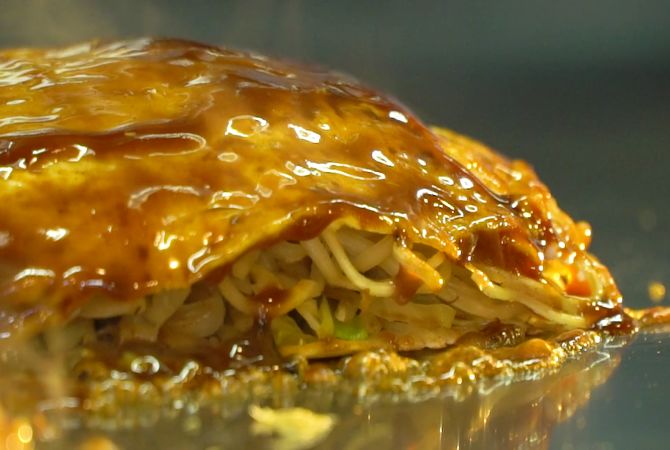

Hiroshima Peace Memorial
The Hiroshima Peace Memorial (Genbaku Dome) stands on the spot where the world's first atom bomb was dropped on August 6, 1945. It was originally a hall for exhibiting local products from Hiroshima. Miraculously, because the bomb was dropped right overhead, the building escaped complete destruction, and stands still even till today in more or less in its original form. It was registered as a UNESCO World Heritage Site as an admonition, and with a wish to avoid repeating the tragedy.


Address: 1-10 Otemachi, Naka-ku, Hiroshima-shi, Hiroshima
Hiroshima Peace Memorial Park
On the other side of the river from the Genbaku Dome is the Peace Memorial Park, which was a bustling town of around 6,500 people when the bomb was dropped. Now, swathed in silence that is hard to believe in the middle of a city, it is a place where a large number of people come to pray for lasting peace for the souls of the war dead and bomb victims. Fresh senbazuru (one thousand origami cranes) are always placed next to the statue of a young girl who died at 12 of leukaemia as a result of radiation. The Genbaku Dome is visible from the cenotaph, which never runs out of fresh flower offerings.
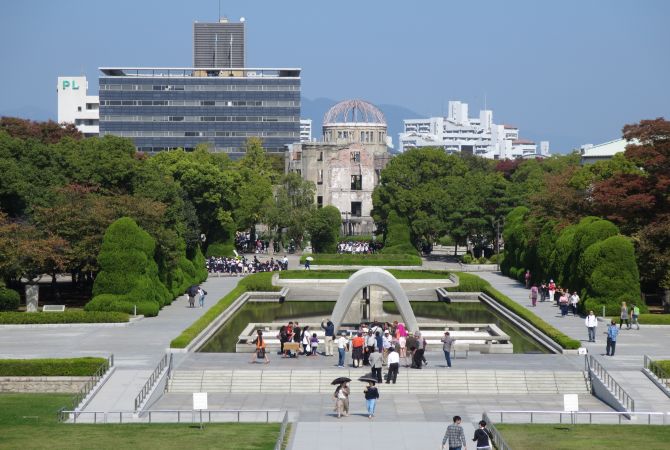
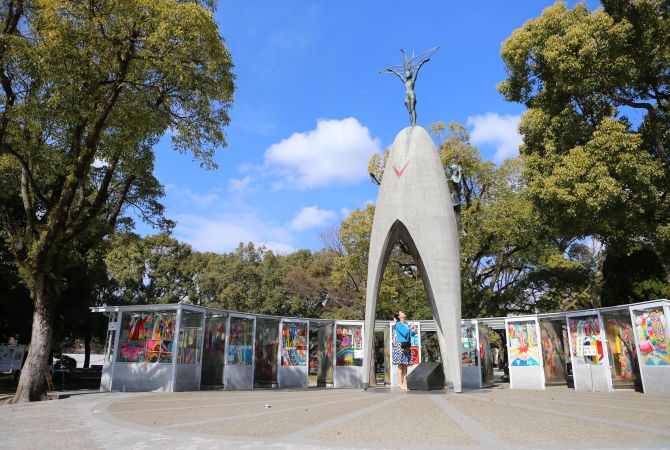
Address: 1-chome Nakajima-cho, Naka-ku, Hiroshima-shi, Hiroshima
Hiroshima Peace Memorial Museum
The Hiroshima Peace Memorial Museum, which displays various documents, testimonies from survivors, and articles left behind by the deceased bomb victims, continues to convey the horror of and misery caused by nuclear weapons to people all over the world through the history of Hiroshima as it is. The East Building has exhibition zones showing the danger of nuclear weapons and the recovery of Hiroshima from the tragedy. The Main Building houses articles left by the deceased, photographs, and other documents detailing the situation at that time. (Note: The Main Building is currently closed for renovations and scheduled to reopen in the spring of 2019.)
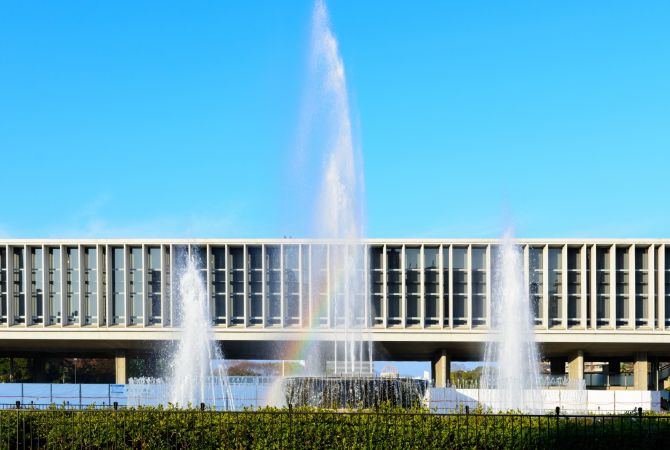

Orizuru Tower
The Orizuru Tower is a commercial complex situated right next to the Genbaku Dome. The first floor has a souvenir shop and a café. The area called the Orizuru Square on the 12th floor offers visitors the experience of folding origami (paper) cranes and dropping them into the glass wall as a form of prayer for the departed souls. Video explanations are provided in several languages, so it is a great opportunity for foreigners to participate in the Japanese tradition of origami even if it is their first time. The observation deck on the 13th floor is a great place from where to enjoy a view of the city.
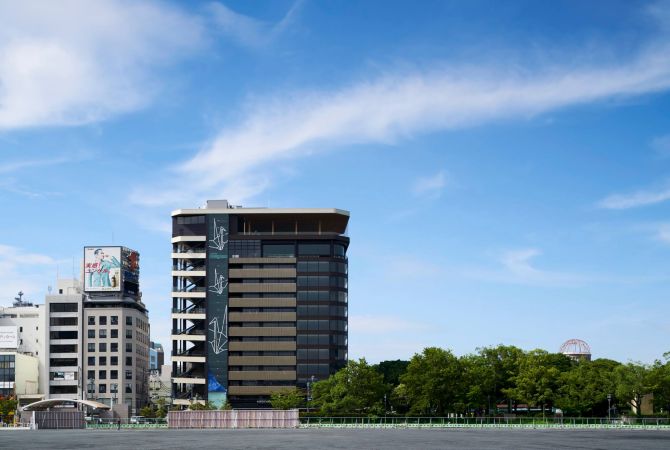

Address: 1-2-1 Otemachi, Naka-ku, Hiroshima-shi, Hiroshima
URL: http://www.orizurutower.jp/en/ (English)
Route (Day 2)
Peace Memorial Park → (45 minutes by water bus) → Miyajima Itsukushima Shrine → (on foot) → Lunch → (on foot) → Walk around Miyajima Omotesando Shopping Street → (on foot) → Miyajima Public Aquarium → (on foot) → Sunset at Itsukushima Shrine
Miyajima – Itsukushima Shrine
Miyajima, the island in the Hiroshima Bay, is Hiroshima's number-one tourist spot and attracts a large number of tourists every year. On the island is the main building of the Itsukushima Shrine, which is listed as a World Heritage Site. The original shrine building was erected 1400 years ago. The shrine is dedicated to the gods of the sea and navigation. The vermilion colour of the shrine building contrasted against the blue sea is so striking as to make those who gaze upon it lose track of time.


Address: Miyajima-cho, Hatsukaichi-shi, Hiroshima
URL: http://visit-miyajima-japan.com/en/ (English)
Aqua Net (water bus)
The Aqua Net water bus is the quickest means of transport from the city of Hiroshima to Miyajima. It is not just convenient, but also offers the attractive opportunity of enjoying a view of Hiroshima from the river and the sea. Passengers can also opt to take a longer route that goes around the torii gate, the symbol of Miyajima. Feel free to choose the course that best matches your travel plan.
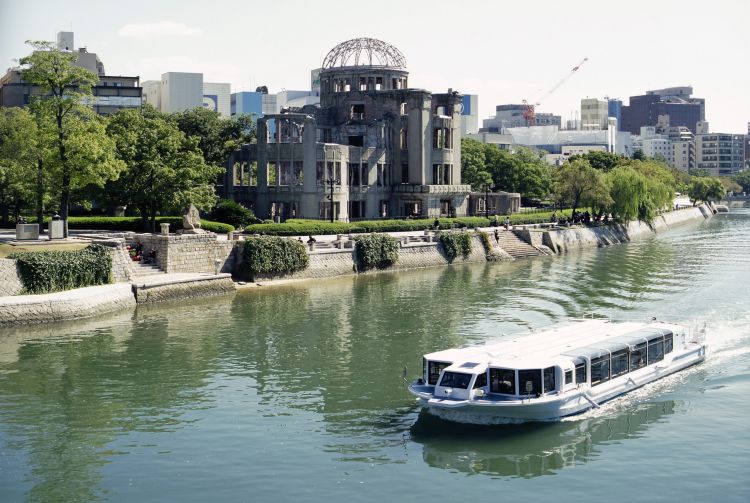
URL: http://www.aqua-net-h.co.jp/en/ (English)
Miyajima Omotesando Shopping Street
The Miyajima Omotesando Shopping Street has a great atmosphere, lined by old traditional wooden buildings with a view of a five-storied pagoda at the far end. It is always thronged by visitors looking for souvenirs to buy or just snacking on various delicacies being sold. Apart from the Miyajima special, wooden handicraft items, you will also find traditional Japanese sweets made of chestnuts and sweet potatoes, as well as cafés selling cool shaved ice desserts. You can easily spend a lot of time here without getting tired.
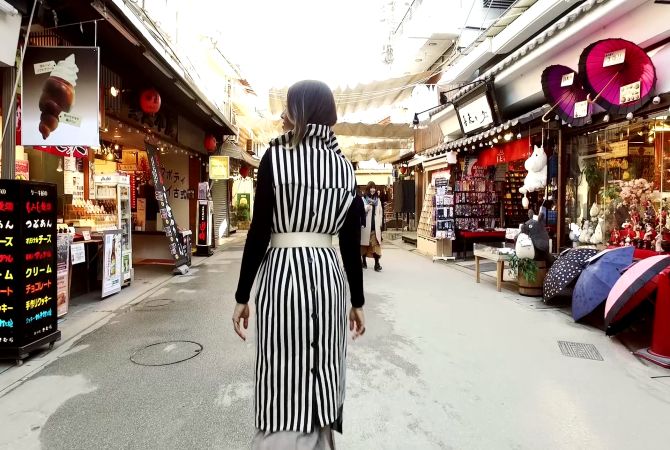

Miyajima Public Aquarium
The Miyajima Public Aquarium is distinctive for its beautiful Japanese-style architecture. The interior of the building has been designed based on the concepts of “soothing” and “interactivity,” and the diverse exhibitions introduce visitors to the mystical world of the Seto Inland Sea. There is an exhibit that shows the ecology of oysters, which Hiroshima is famous for, and a tank that features dolphins from the Seto Inland Sea. There is even an area for interacting with Humboldt penguins, which are a rarity in Japanese aquariums. All in all, it is a place where both kids and adults can have fun.

Address: 10-3 Miyajima-cho, Hatsukaichi-shi, Hiroshima
URL: http://www.miyajima-aqua.jp/english/ (English)
Sunset at Itsukushima Shrine
The Itsukushima Shrine is beautiful even during the day, but please do visit once again at sunset. The shrine's main building and great torii gate, lit by the scarlet of the setting sun, takes on an even more dynamic aspect and looks so spectacular as to seem unreal. Taking in this view at the end of your trip will leave you with memories that can be cherished for a lifetime.
